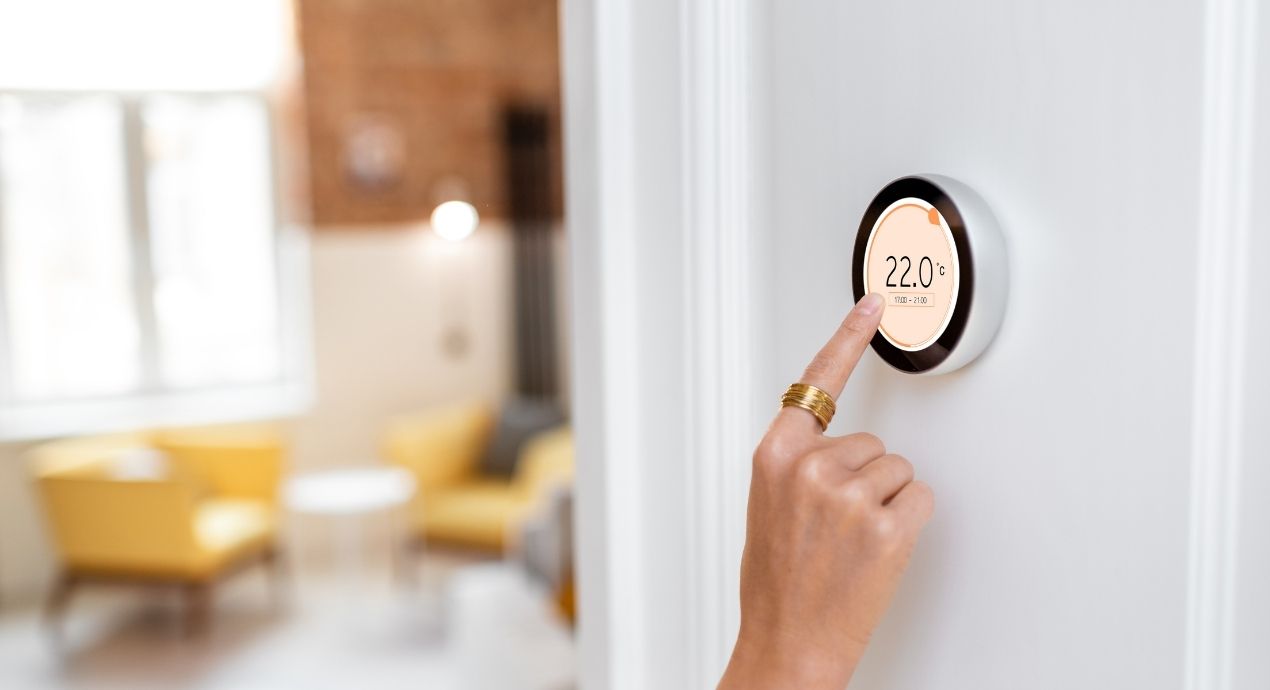
Contemplating coverage?
Subscribe to receive our emails & get
$200 off!
Have questions?
Call us: (833) 544-8273


Written By Erin Easley
It’s freezing outside, you’re wearing a hat and gloves in your home, and you’re searching the internet for “reason for heater not working.” How did we get here?
A home heating system not working properly isn’t just inconvenient; it can be downright dangerous. Few homeowners know how to repair home heating system equipment, and some system malfunctions will require professional help. But a home heating system troubleshoot plan can help you discover that your problem isn’t that complicated, ultimately saving you time and money.
Let’s explore how you can go about troubleshooting heating system equipment in your home.
Unless you’re heating your home with a wood-burning fireplace, you need to know that your system is getting power. Confirm that your furnace is drawing power by checking its indicator lights. If it’s clearly powered on, move ahead to the next step. If there aren’t obvious signs of power, confirm that the machine is switched on. Many models have a switch that looks like a classic light switch. Flip the switch if you find set in the “off” position.
If the furnace is switched on but still isn’t drawing power, the last step is to confirm that the circuit is working. Check your circuit breaker or fuse box. Reset the breaker or fuse if necessary. If that doesn’t seem to be the problem, try the other solutions below.
Note that checking your equipment for power should be your first course of action even if you don’t have a central heating system. Those who live in homes with ductless heating systems should also check that their units are powered on before they bother to call in the professionals.
If your heating system is powered on but not heating the house, your thermostat is the likely problem. Many programmable thermostats are complicated and unintuitive, depending on your comfort with electronics. It’s also easy for a child to change a setting while playing with the buttons, or you may have adjusted something inadvertently while cleaning.
Check that your heat is turned on at the thermostat. Confirm that it’s set to at least three or four degrees above the temperature of the room. Remember to allow a few moments for the fan to engage after adjusting the thermostat’s setting.
If you’re still not getting heat, you may need to simply replace the thermostat’s battery. It’s also possible that you need to reconfigure your thermostat. Check your owner’s manual or search for instructions online. A final possibility is that a wire disconnected somewhere. You can try to trace the wire to look for a break, but it’s understandable if you would rather leave this to a professional technician.
Sufficient airflow is crucial for a functioning heating system. If you’re noticing that only certain parts of the house aren’t receiving heat, there are probably blocked vents or ducts. Check that your floor, wall, or ceiling vents aren’t obstructed by furniture, clothes, or other objects. It’s also possible that there are gaps in your home’s heating ducts. Scan visible ducts, especially where they branch off, for gaps or air leaks. Applying some duct tape is a simple solution.
If your home has an external vent, it’s possible that it’s become obstructed by leaves, twigs, dirt, or even a bird’s nest. Grab a pair of gloves and clear away any debris as needed.
Finally, your problem may be a clogged filter. Depending on your furnace, the filter should be changed anywhere from once a month to once every three months. Many homeowners neglect this, leading to a significant accumulation of dirt, dust, and soot that keeps your heating system from operating efficiently. In exceptionally bad cases, it may seriously impair your equipment from heating your home. Check your filter and replace as needed.
If your home uses a gas furnace, you’ll want to confirm that the gas is turned on. A valve should be somewhere near your furnace. You may need to trace the gas line back to the meter. If you see a lever perpendicular to the pipe, that means the gas has been shut off. But before turning it on, contact your gas company to see if there’s a reason why it had been shut off.
If you followed these steps and you’re still without heat, you’ll need professional assistance. That can be expensive, but home heating warranty coverage from Liberty Home Guard can keep your costs down. With one of our plans, you’ll never have to worry about paying for an AC/heater not working properly. Call (866)-809-0507 or use our website for a free quote.
Stay Ahead of Potential
Home Mishaps!
Subscribe to our Liberty Home Guard Newsletter and gain access to exclusive content that ensures your peace of mind.